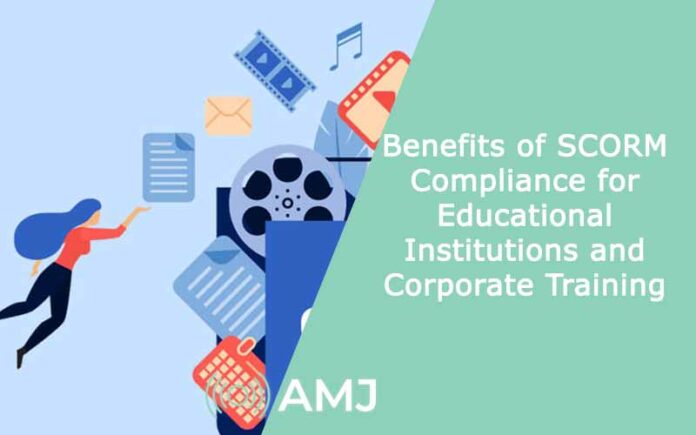As more educational institutions and corporate training programs embrace platforms for course delivery, the importance of ensuring content compatibility with learning management systems (LMS) has grown significantly. SCORM compliance plays a role in this aspect. Let’s delve into the advantages of SCORM compliance for both institutions and corporate training programs.
Contents
What Does SCORM Compliance Entail?
SCORM compliancy referring to the Sharable Content Object Reference Model, encompasses a set of standards that establish a structure for packaging eLearning content. It guarantees the importation, delivery, tracking, and reporting of content within an LMS. Essentially, SCORM governs how online courses interact with LMS platforms.
1. Enhanced Compatibility Across Multiple LMS Platforms
A primary benefit of SCORM compliance lies in its capacity to ensure content compatibility across diverse learning management systems used by institutions and corporate training programs. With organizations employing LMS platforms based on their unique requirements and preferences, adhering to SCORM standards allows them to effortlessly upload the same package onto various systems, saving valuable time and resources.
2. Economic Efficiency
Adherence to SCORM standards can result in cost savings over the term for both educational institutions and corporate training programs.
When the course material does not adhere to SCORM standards, customization is required when transferring from one LMS to another. This customization process can be labor-intensive and costly.
Conversely, if the content follows the SCORM standard, it remains consistent regardless of the LMS being used. Consequently, organizations can eliminate expenses related to custom integration or modifications when switching between learning management systems.
3. Seamless Content Updates
Educational institutions that provide courses constantly update their course materials in response to changes in the industry. To enhance instructional design aspects, without SCORM compliance, updating content across LMSs becomes arduous and time-consuming.
However, with content that adheres to SCORM standards, organizations can significantly simplify the process of updating their courses. With a set of SCORM files, modifications can be made centrally and seamlessly across various learning management systems.
4. Improved Tracking and Reporting
SCORM offers a method for monitoring learners’ progress and performance within an LMS. It allows organizations to gather data on learner activities such as course completion rates, assessment scores, time spent on each module or section, and more.
This information provides insights into learner engagement levels, course efficacy, and areas that may need enhancement.
Educational institutions and corporate training programs can use this information to customize their courses based on the preferences of their students or employees.
5. Enhanced Learning Experience
Following SCORM standards also enhances the learning experience for learners. Content creators ensure that multimedia components like videos, presentations, quizzes, and interactive modules display correctly in any learning management system (LMS) environment by complying with SCORM guidelines.
Furthermore, SCORM compliance encourages interactivity by enabling the integration of features such as learner interactions or discussions within the course interface itself. This fosters motivation and involvement from learners.
6. Increased Accessibility and Flexibility for Learners
SCORM compliance not only benefits institutions and corporate training programs but also offers greater accessibility and flexibility to learners. Adhering to SCORM standards allows online course content to be accessed from devices and platforms, including desktops, laptops, tablets, and smartphones.
This flexibility enables learners to access course materials at their convenience, whether they are at home, in the office, or on the move. It removes the necessity for learners to be confined to a location or device.
Moreover, SCORM compliance ensures a user experience across devices. Learners can initiate a course on one device. Resume where they left off on another without encountering compatibility issues.
This freedom to choose and easy access improve learner engagement. Support learning.
In Summary
Integrating compliance into eLearning programs offers various advantages to educational institutions, corporate training programs, and learners themselves. Being compatible with multiple learning management systems saves time and effort during platform transitions while also ensuring cost-effectiveness. The standardized framework allows for seamless content updates across LMSs. Provides tracking and reporting features to monitor learner progress effectively.
Furthermore, adhering to SCORM standards enhances the learner experience by delivering multimedia content across various devices and enabling learners to access courses at their convenience. By acknowledging the benefits of SCORM compliance, organizations can enhance their online learning initiatives. Maximize benefits for both administrators and learners.
Whether you represent an institution or a corporate training program seeking to utilize technology for online curriculum delivery, adopting SCORM standards is unquestionably a valuable step toward improving the quality of your eLearning endeavors.












![Index of Money Heist [Season 1, 2, 3 & 4 – All Episodes, Cast and Plot] Index of Money Heist](https://www.asiamediajournal.com/wp-content/uploads/2021/05/Index-of-Money-Heist-3-100x70.jpg)